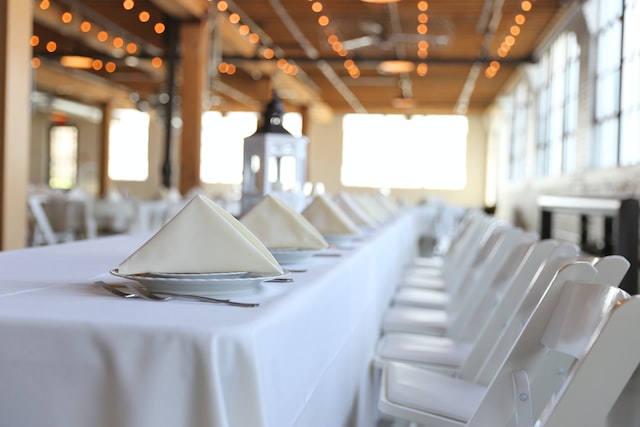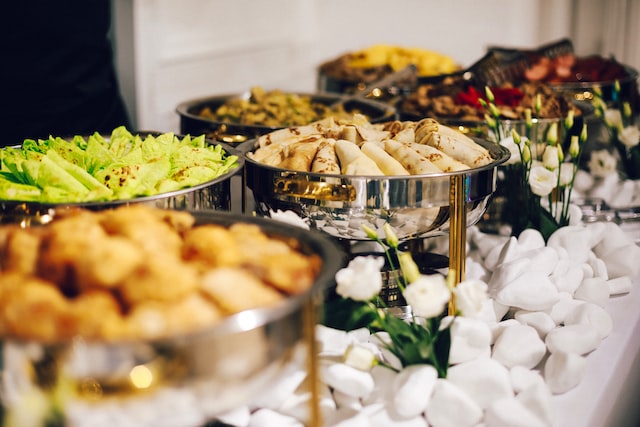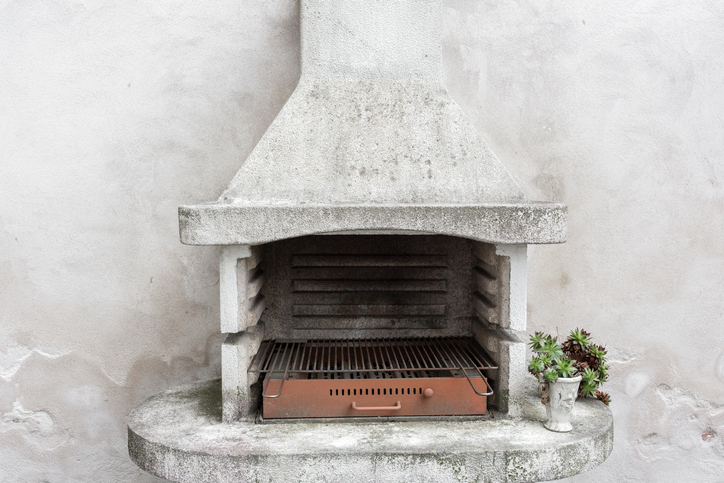Whether you’re an at-home chef or someone with a professional cooking career, you can start your own catering business to share your talent with paying customers. The art of catering is extremely sought after by all types of clients, and it’s a perfect way to showcase your own delicious creations for various events.
If you’re interested in offering your own at-home catering services to customers, this guide has the information you need to get started. No matter what type of food you love to make, you can become a home-based caterer who turns doing something they love into a profitable, successful business.
Table of contents
The catering market by the numbers
The world of home catering is always evolving, and it looks like it’ll continue to grow in the coming years. In terms of market growth and outlook, the size of the catering sector in the United States grew by an impressive 16% in 2021. The industry had a total valuation of approximately $9.51 billion in 2021 and a staggering $10.59 billion in 2022.
There are several reasons for this surge in market growth. For one, more customers are ordering food to be delivered versus picking it up. Numbers show that approximately 74% of customers prefer delivery compared to 26% of customers who prefer to pick up food.
Now is an excellent time to start if you’re interested in running an at-home catering business. A preference for online catering is another reason why the market is continuing to thrive. If you’re considering starting a catering business, make sure you incorporate some form of online ordering to help you grow.
How to become a caterer

If you’re interested in becoming a professional caterer, there are a few things you’ll need to do. Here are the three main components that you should consider to provide your delicious food to customers:
- Education: At a minimum, you should have a high school degree before you can become a professional caterer. Most parts of the country require caterers to receive a license, and some choose to pursue a degree in higher education. The degree can come from an American Culinary Federation (ACF) accredited school or smaller local vocational institutions.
- Skills: Not only will you need to know how to do professional cooking, but you’ll also need to have deep knowledge of proper food handling and sanitation. If you’re running the business from home, you’ll require commercial-grade appliances and a large enough fridge and freezer to store your food safely.
- Duties and responsibilities: As a professional caterer, you’ll help plan menus and integrate your clients’ requests and any special dietary needs. Depending on the event, you may also be responsible for setting up tables and chairs and preparing the tables with linens, plates, glasses, and cutlery. You’ll also load and unload your vehicle with all the necessary food, supplies, and equipment. Of course, caterers also prepare and serve the food to their customers.
The benefits of starting a catering business
If you love the art of cooking, there are many excellent benefits to starting your own at-home catering business. Here are some pros – and cons – if you decide to take on this new role:
- Flexibility: As a business owner, you’ll have the flexibility to choose your own schedule. If you need some time off, all you need to do is simply let your clients know when you are and aren’t available. This also gives you the freedom to do other things you love, focus on new hobbies, or simply enjoy a nice vacation with your family whenever you want to.
- Profitability: Running a home-based business costs less than paying for a brick-and-mortar location. Lower overhead means more money in your pocket and higher profitability for you. Without paying rent or commuting, you’ll save money while you make more cash over time. You can start out small and grow as demand increases.
- Pros and cons: Owning a catering business is a great option for any chef at any level, as long as you have a good business plan. Some of the cons include potential liability if something goes wrong with your food, separating your business life from your home life, and dealing with high-pressure clients.
How to start a catering business from home
Now that you know more about what kind of skills and responsibilities you’ll have as a home-based caterer, it’s time to examine how you can start your own catering business.

Planning
Every successful business starts with proper planning. Remember these tips to help you get ahead of the game:
- Market research: Take some time to do market research and look closely at your competition. Research what types of food people like best in your area and the kind of events that typically require caterers. Look at trends in catering to figure out what’s hot and what’s not. Read reviews of other caterers to help you get a better idea of what customers are looking for and what they don’t like in a caterer.
- Target: Use the market research you do to help you narrow down your target market. It’s important to decide what you want to specialize in now. Whether it’s sweet desserts, five-course meals, or finger foods, determine which menus you plan to offer and which are the most profitable. Remember to keep the cost of food, transportation, and cleanup in mind as you narrow down your target.
- Niche: Every successful business knows its niche and does it well. Perhaps you want to cater for weddings, or maybe you prefer to serve food at corporate events. Other professional cooks enjoy serving food during the holidays. Look carefully at all the options and consider which aspect of catering you want to master.
- Marketing: Come up with a business name and logo to help you market your new catering business. Choose a short, catchy, and creative tagline to help you with branding. Use tools like social media and networking to help spread the word about your business online and in person. Always incorporate your business name, logo, and tagline on everything from your website and business cards to your social media accounts.
Menu and pricing
Not all caterers are alike, so coming up with an amazing menu and setting your pricing in advance is crucial. Come up with some signature menu items and price each one accordingly. Consider offering bulk discounts to those who need catering for larger events or offer your menu a la carte so clients can pick and choose what they want.
Much of your pricing structure will depend on what type of catering you plan to do. Remember to take things like the cost of ingredients and the total time it takes to prepare and make each dish into account. Here are the four most common types of catering to consider:
- Industrial catering: This catering serves food to schools, prisons, and other companies with large contracts. You can also choose to provide food to the movie, television, and general entertainment industry niches.
- Business catering: For business catering, you’ll serve boxed lunches and buffet-style meals to local businesses and non-profit organizations. Business catering is one of the best ways to market your business. Many happy customers will spread the word and give you free word-of-mouth advertising.
- Mobile catering: A mobile caterer serves food from concession stands or various parking lots. Your menu will be more limited with this style since you won’t have a large commercial kitchen to work from. However, you have more flexibility with this option, and it’s easier to offer simpler menu options or rotate your selections.
- Social event catering: In terms of catering businesses, this catering type is one of the most demanding. As a social event caterer, you’ll serve food for weddings, retirement parties, and other social events. This business model allows you to make various foods based on the event, and it’s another excellent way to take advantage of word-of-mouth marketing.
Set up your kitchen

TV Cooking Show in Restaurant Kitchen: Portrait of Black Female Chef Talks, Teaches How to Cook Food. Online Courses, Streaming Service, Learning Video Lectures. Healthy Dish Recipe Preparation
Having a workable kitchen with the right equipment is the cornerstone of catering success. Here are a few important things you’ll need to consider:
- Appliances and equipment: Stock your kitchen with heavy-duty appliances like a large fridge and freezer, a chef’s oven and stovetop, and fryers. You’ll also need smaller appliances like a food processor, a stand mixer, and a quality blender. Make a list of the tools and equipment you’ll need, including a variety of pots and pans, mixing bowls, utensils, and food storage containers – just to name a few.
- Space and storage: You’ll require plenty of space to move around, so choose a large area with room to walk back and forth between different zones. Of course, storage is of the utmost importance so ensure you have a large chest freezer and a walk-in fridge (if you have room in your kitchen). Keep fresh and dried produce stored separately, and ensure you’re storing fresh meat, eggs, and dairy items correctly and at the appropriate temperature.
- Prep zone: Use stainless steel tables to create a prep zone where you can chop, mix, and prepare your foods separately from the cooking and baking area. Your prep zone should be located near a sink so you can wash and sanitize your hands between handling different foods. A three-compartment sink is great for rinsing foods, washing hands, and doing dishes, so each task has its own separate place.
- Make some changes: You may need to remodel your kitchen to make room for your home catering business. Consider hiring a skilled, experienced handyman near you to help you complete the work. Install shelving or upgrade your electrical capacity to handle heavy-duty industrial appliances without overloading the system.
With a kitchen appliance home warranty, you can have peace of mind knowing that if any of your covered appliances break down due to normal wear and tear, the cost of repairs or replacements will be covered. This can help you avoid the potentially high cost of repairing or replacing a major kitchen appliance out of pocket.
Transportation
In most cases, you’ll need to be able to safely transport your delicious food to the customer. Here are some tips to ensure that you follow the proper methods of transportation to keep the food fresh, delicious, and safe to eat:
- Food preservation and temperature: Use insulated carriers to keep the temperature of your food at the correct level and to keep everything fresh and tasty. Utilize food pan carriers that fit differently sized food pans and can retain the temperature of dishes for up to seven hours. These tools allow you to transport meals to various events and locations without having to worry about your hard work spoiling before it arrives.
- Drinks preservation and temperature: The same rule applies to beverages, so make sure you use an insulated container for both hot and cold drinks. Certain beverages, like hot tea, can lose their freshness, while iced drinks can end up being watered down by the time they arrive. Use insulated dispensers with a faucet and provide ice separately to keep drinks fresh for up to seven hours.
- Proper packaging: Never package hot and cold foods together as it poses a safety risk. Cold food can also cause the temperature of your hot dishes to lower, which may result in spoilage. Store all your food in separate containers or pans to reduce cross-contamination and spoiling, and keep everything covered using snug lids, plastic wrap, or aluminum foil. Hot food should be kept at a temperature of 140 degrees Fahrenheit or higher, and cold foods should be stored at 40 degrees Fahrenheit or lower.
- Organization: Good organization is the key to helping you prevent an accidental mess while transporting your food. Use built-in shelving inside your catering vehicle and fill the shelves before you place anything on the floor. Load the heaviest items first and then place lighter items on top to keep the heavier items from crushing them. Stack boxes on top of each other and keep them in place with horizontal poles. You can also use the walls of your vehicle or other catering equipment as support. Empty your vehicle before you load it again to eliminate unnecessary clutter.
Use catering management software
There are several excellent catering management software programs, like E-Cinch, available to help you with things like scheduling, time management, and task management. Choose a software program that uses a booking management calendar so you can keep track of current bookings, schedule appointments and phone calls, and prevent accidental double bookings. The software should sync with your Google calendar or other digital calendars.
Look for programs that generate reports like invoices, checklists, proposals, and profit and loss reports. Customer relationship management (CRM) is a helpful tool that helps you organize and track your customer and vendor information in real time while giving employees the same information. Some examples of quality catering management software include Releventful, Connecteam, Foodstorm, and Tripleseat. Compare the prices and benefits of several programs before you decide which one is best for your business needs.
License and permits
Every restaurant and professional caterer must have the proper licensing and permits in order to do business. Each type of license and permit has its own unique requirements, and they may vary based on your specific location.
To find out which ones you need, get in touch with your state or occupational health licensing department. Check the U.S. Food and Drug Administration (FDA) list of regulations and codes, which should provide you with more details about the food service regulations in your specific state. The Small Business Administration (SBA) also has guidelines regarding the catering rules in each state.
Here are some examples of some of the licenses and permits you will need:
- Business license: Every business must have a current and valid business license in order to be approved to conduct business in its specific jurisdiction. Apply for a business license on your state’s official website. You can get one after you prove that you’ve complied with all the other requirements regarding catering permits and licensing.
- Food handler’s license: Any person who handles food must have a food handler’s license and prove they have received the proper food safety training and certification. You’ll need to take a short course and complete a final exam. This can usually be taken online, although many community colleges and private culinary schools offer food handling courses.
- Catering license: All professional caterers must have a catering license, and some may also be required to have a separate food vendor license. If you’re delivering food to a client or a client’s event, then you’ll need this license. Most county health departments provide these types of licenses.
- Home occupation permit: When operating a catering business from your home, you may need to get a home occupation permit and business license. Check with your local city council to confirm and research whether there are any restrictions based on your location. You may also need to contact your local zoning administrator, fire department, and local building department to confirm that your home is in compliance with local building codes.
- Building health permit: Some states require caterers to get a building health permit. This permit ensures that you comply with sanitation regulations, so check with your local health department to determine if you need this type of permit.
Hire and train your staff/personnel
Small catering jobs can typically be handled independently, but as your catering business grows, you may find that you could use extra help. Catering larger events and those with bigger, more complex menus usually requires a few helping hands.
Even if you’re completely capable of making all of the food yourself, you may need some help transporting and serving it. Having help with the cleanup will also take some of the stress off of you. If you’re serving food buffet-style, you might want to hire people to keep the buffet stocked and the food warm. Sit-down meals require plenty of people to serve food, take dirty plates, and confirm that customers are happy with their meals.
If you attended a culinary school, you may be able to reach out to current students or ask a few of your fellow graduates for help. Some examples of positions you may want to hire include cooking assistants, sous chefs, drivers, servers, and dishwashers. If you need help with marketing or accounting for your business, consider hiring administrative help as well.
Remember that no matter how experienced your new staff members are, you’ll still need to provide training. The key is to ensure that your new hires are able to provide your clients with the level of service they deserve. This also helps to protect and preserve your brand and your reputation. Hiring a separate office manager or accountant can be especially helpful if you don’t have experience with bookkeeping or if you need someone to handle scheduling and appointments, tax filing, and other administrative tasks.
Promote your business

Once you have your equipment in place, all of the required licenses and permits, and a solid business plan, it’s time to do some marketing to promote your catering business. Keep these key elements in mind to ensure that you reach new customers and your target market:
- Website: Now that the business of ordering food online is skyrocketing, having a well-made website is essential for success. Design a unique website that showcases your specialties, includes your menu, pricing, and what type of businesses or events you cater to, and provides some interesting information about your background. Include a contact page so interested customers can ask questions to find out more about what you offer. Using one page on your site to showcase your portfolio of past successful catering gives people a clear idea of what you make and how it’s presented. Your “about” page should include information about you, your experience, and your background in food prep, cooking, and catering.
- E-commerce: If you’re planning to take payments online, integrate a payment platform on your website so you can accept credit cards and/or other payment processing platforms like Paypal or Venmo. You can also consider an e-commerce checking account which would allow you to manage your store safely and simplify your budgeting since it integrates with a lot of tools for better management. Besides integrating such accounts with, for example, QuickBooks, Shopify, Stripe, and so on, you can also use it to view all your e-commerce finances from one account. Consider adding things like automated order confirmations, partial deposits, and fast, easy quotes to potential customers. The more features of e-commerce you can offer, the more customers you’re likely to reach.
- Digital marketing: Use search engine optimization (SEO) to drive customers to your website by incorporating as many valid keywords as possible. Target locals by also using local SEO terms in your website content, blog posts, and general marketing. Add your website to local catering directories so people can find you based on your niche (i.e., vegetarian menus or weddings).
- Social media: Stay active and engaged on as many social media platforms as possible. Set up a Facebook, Twitter, and Instagram account with your business name, website, and logo. Answer customer questions and add new content regularly so you’re on top of the algorithm. Link to blog posts you’ve written and use expert language that shows you’re an experienced chef in your field.
- Photos: Always include clear, enticing photos of your food products, dishes, and desserts. You can also include photos from various events you’ve catered to. Use these photos everywhere, from your website and social media posts to your portfolio and menu. Take high-quality professional photos and choose pictures that really highlight what makes you different from the competition.
- Tasting events: Host occasional tasting events where potential clients can try out samples of your most popular dishes and desserts. The chance to actually taste the food you make is one of the best and most effective ways to draw people to your catering business. Include a list of ingredients for each dish so customers know what they’re getting.
- Reviews: Customer reviews are one of the most effective ways to market your company. After every event you cater, ask your clients if they’d be willing to post a review online. The more positive reviews you get, the more interested others will be in using your services. Ask people to review your business on your social media accounts so that they’re recent and relevant. Don’t hesitate to send your customers a link to a custom survey so you can gauge how well you’re doing and where you need to improve. Not only are reviews great for marketing, but they can also help you identify pain points to help you tweak your menu and your services.
If cooking is your passion, consider starting your own catering business from home. With the right target market, proper planning, and some creative marketing, you can experience the flexibility and creative freedom that catering brings. Use the tips from this guide to inspire you as you venture into the world of at-home catering, and soon you’ll be reaping the rewards of success.




